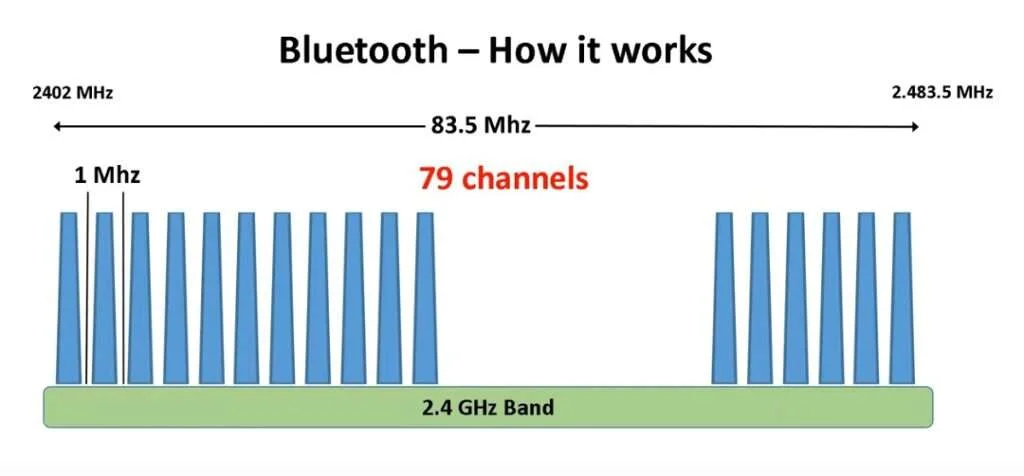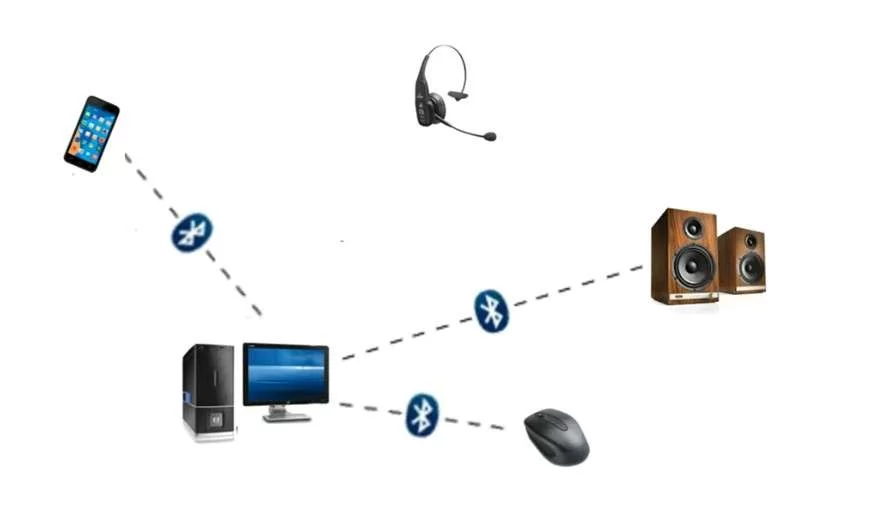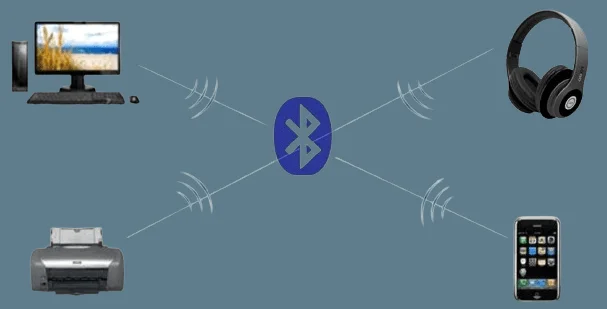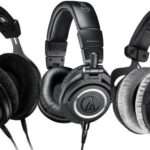Bluetooth technology enables wireless communication between devices within a short range, typically up to 30 feet. Its features include low power consumption, easy pairing, and compatibility with various devices.
Bluetooth technology has revolutionized the way we connect and interact with our devices. By allowing for seamless, wireless communication, Bluetooth has become an integral part of our everyday lives.
From connecting headphones to smartphones to transferring files between devices, Bluetooth offers convenience and efficiency.
Its low power consumption makes it an ideal choice for wearable devices, while its easy pairing process simplifies the connection between different gadgets. With its widespread compatibility and versatility, Bluetooth technology continues to play a crucial role in our increasingly interconnected world.
The Basics of Bluetooth
Bluetooth technology is a wireless communication protocol that allows devices to connect and exchange data over short distances. It is commonly used in various electronic devices, such as smartphones, headphones, and speakers.
The features of Bluetooth technology include low power consumption, ease of use, and compatibility with a wide range of devices.

What Is Bluetooth Technology?
Bluetooth technology, named after a 10th-century Danish king, Harald Bluetooth, is a wireless communication standard designed for short-range data transmission between electronic devices. It operates on radio waves in the 2.4 to 2.485 GHz frequency range and facilitates data exchange over short distances, typically up to 100 meters, without the need for wires or cables.
The Origins of Bluetooth
The modern incarnation of Bluetooth technology began to take shape in the 1990s, with a group of engineers at Ericsson spearheading its development. Bluetooth technology was invented by Ericsson in 1994 and standardized in 1999.
Named after the king, Bluetooth symbolizes connectivity and communication.
How Does Bluetooth Work?
Bluetooth utilizes a technique called frequency-hopping spread spectrum (FHSS) to minimize interference and ensure secure communication between devices. FHSS involves rapidly switching frequencies within the specified range, allowing devices to avoid interference from other wireless technologies operating in the same frequency band.
Types of Bluetooth Technology: From Classic to Low Energy
Over the years, Bluetooth technology has undergone several iterations, each introducing new features and capabilities. The two primary variants of Bluetooth technology are:
Bluetooth Classic (BR/EDR)
Also known simply as “Bluetooth,” this variant is optimized for high-speed data transfer and is commonly used for applications such as audio streaming and file sharing. Bluetooth Classic devices consume more power than their low-energy counterparts but offer higher data throughput.
Bluetooth Low Energy (BLE)
Introduced with Bluetooth 4.0, BLE is designed for power-efficient communication, making it ideal for devices with limited battery life, such as fitness trackers and smart sensors. BLE maintains compatibility with Bluetooth Classic while offering reduced power consumption and longer battery life.
The Evolution of Bluetooth Technology
Bluetooth technology has undergone significant evolution over the years, revolutionizing the way we connect and communicate wirelessly. This evolution has seen Bluetooth technology continuously improve in speed, range, and efficiency to meet the demands of modern connectivity.
Bluetooth Versions and Improvements
Bluetooth technology began with version 1.0 offering basic data transfer capabilities. Subsequent versions such as 2.0, 3.0, and 4.0 brought enhanced speed, lower power consumption, and better security protocols.
With the introduction of Bluetooth 5.0 and later versions, significant improvements were made in range, data transfer speeds, and overall reliability.
Expanding Applications of Bluetooth
Bluetooth technology is now widely used in various applications beyond simple audio streaming and file sharing. From smart home devices and healthcare to automotive systems and industrial automation, Bluetooth has expanded its reach across diverse industries, enabling seamless connectivity in numerous devices.
Applications of Bluetooth Technology: From Headsets to Smart Homes
The versatility of Bluetooth technology lends itself to a wide range of applications across various industries. Some common uses of Bluetooth technology include:
Wireless Audio Streaming
Bluetooth-enabled headphones, speakers, and car stereos allow users to enjoy music and make hands-free calls without the hassle of tangled wires.
Peripheral Device Connectivity
Keyboards, mice, printers, and other peripherals can connect to computers and mobile devices via Bluetooth, eliminating the need for cumbersome cables and adapters.
Smart Home Automation
Bluetooth-enabled smart home devices, such as light bulbs, thermostats, and security cameras, can be controlled remotely using smartphones or voice commands, enhancing convenience and energy efficiency.
Health and Fitness Tracking
Wearable devices equipped with Bluetooth technology can monitor physical activity, heart rate, and sleep patterns, providing users with valuable insights into their health and fitness levels.
IoT (Internet of Things) Connectivity
Bluetooth technology plays a crucial role in the IoT ecosystem, enabling seamless communication between interconnected devices in homes, offices, and industrial settings.

Key Features of Bluetooth Technology
Bluetooth technology has revolutionized the way we connect and share data wirelessly. Let’s explore some of the key features that make it such a sought-after technology.
Wireless Connectivity
One of the primary advantages of Bluetooth is its wireless connectivity, which allows devices to communicate and share data without the need for physical cables.
This feature enables seamless connections between devices, such as smartphones, laptops, headphones, and speakers, making it incredibly convenient for users.
Low Energy Consumption
Another standout feature of Bluetooth is its low energy consumption, which contributes to extended battery life for connected devices.
This energy-efficient technology is particularly beneficial for IoT devices, wearables, and other portable gadgets that rely on battery power, allowing for prolonged usage without frequent recharging.
Impact of Bluetooth Technology on Industries
Bluetooth technology revolutionized various industries, enabling seamless wireless communication between devices. Its key features include low energy consumption, secure data transfer, and compatibility across a wide range of devices.
This technology has significantly enhanced connectivity and productivity in sectors such as healthcare, automotive, and IoT.
Impact of Bluetooth on Industries Bluetooth technology has revolutionized the way industries operate, bringing convenience, efficiency, and connectivity to various sectors. This wireless communication standard has opened up possibilities for innovation and growth in numerous industries.
Let’s explore how Bluetooth has impacted the automotive industry, healthcare, and wearable technology. HTML format:
Automotive Industry
The automotive industry has embraced Bluetooth technology to enhance the driving experience for consumers. Bluetooth-enabled vehicles offer hands-free calling, allowing drivers to stay connected while keeping their focus on the road.
Additionally, Bluetooth connectivity enables audio streaming, making it possible to play music and podcasts wirelessly. This technology has seamlessly integrated smartphones with car systems, providing drivers with navigation assistance, real-time traffic updates, and voice command controls.
With Bluetooth, the automotive industry has successfully transformed the way we drive, ensuring safer, more comfortable journeys for all.
Healthcare and Wearable Technology
In the healthcare industry, Bluetooth has played a pivotal role in the development of wearable technology. Bluetooth-enabled devices such as fitness trackers, smartwatches, and medical monitoring devices have revolutionized healthcare management.
These wearables can track vital signs, monitor physical activity, and collect health data, which can then be seamlessly transmitted to smartphones or other connected devices for analysis.
Bluetooth technology has paved the way for remote patient monitoring, enabling healthcare professionals to monitor patients’ health in real-time, even from a distance.
Furthermore, the ability to connect wearables to mobile apps has empowered individuals to take control of their health and make informed decisions about their well-being.
Future Possibilities for Bluetooth Technology
As technology continues to evolve, so too does Bluetooth technology. Some emerging trends and developments in the world of Bluetooth include:
Bluetooth Mesh Networking
The introduction of Bluetooth mesh networking allows for the creation of large-scale IoT networks, enabling devices to communicate with each other seamlessly over extended distances.
Enhanced Audio Quality
Ongoing advancements in audio codecs and hardware technology promise to deliver improved sound quality and lower latency for Bluetooth audio streaming, enhancing the listening experience for consumers.
5G Integration
Integration with 5G technology opens up new possibilities for Bluetooth-enabled devices, enabling faster data transfer speeds, reduced latency, and enhanced connectivity for emerging applications such as augmented reality and virtual reality.
Frequently Asked Questions about Bluetooth Technology
What Is The Bluetooth Technology?
Bluetooth technology is a wireless communication system that allows devices to connect and exchange data. It operates on short-range radio waves, enabling hands-free calling, music streaming, and file sharing between compatible devices.
This technology is integrated into smartphones, headphones, speakers, and other electronic gadgets for seamless connectivity.
What Are The Features Of Bluetooth?
Bluetooth features include wireless connectivity, short-range communication, compatibility with various devices, low power consumption, and ease of use for data transfer and audio streaming.
It enables devices such as smartphones, headphones, and speakers to connect and communicate wirelessly without the need for cables.
What Means Bluetooth?
Bluetooth is a wireless technology that allows for short-range communication between devices. It enables data transfer, like files and audio, without cables.
What Are The Features Of Bluetooth Signals?
Bluetooth signals have a range of up to 100 meters, making them ideal for short-range wireless communication. They use low power and can connect multiple devices simultaneously. Bluetooth signals can transmit data, audio, and control commands, providing versatile connectivity options.
Conclusion
Bluetooth technology has become an integral part of modern life, facilitating wireless communication and connectivity across a wide range of devices and applications.
With ongoing advancements and innovations, Bluetooth is poised to continue its transformative impact on various industries and consumer electronics, shaping the future of wireless connectivity.

A passionate tech blogger and the founder of Best Tech View, a dynamic platform dedicated to all things technology. With a keen interest in the tech, Ahmad strives to provide insightful and engaging content on the latest tech trends, and breakthroughs.



